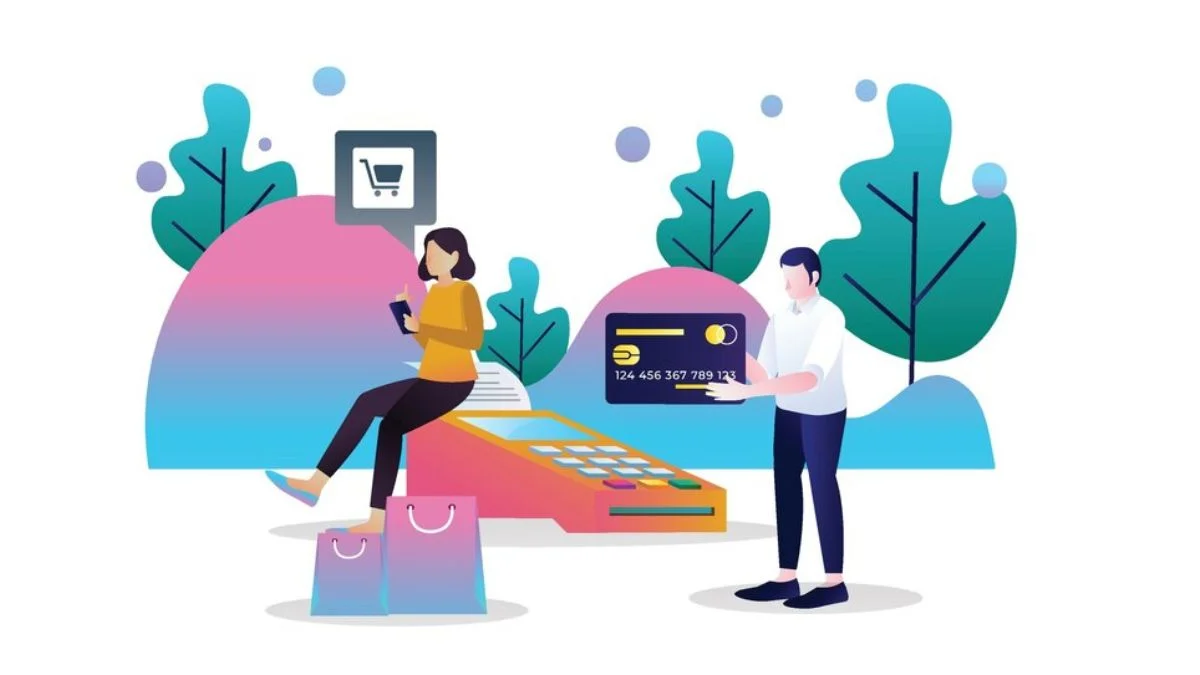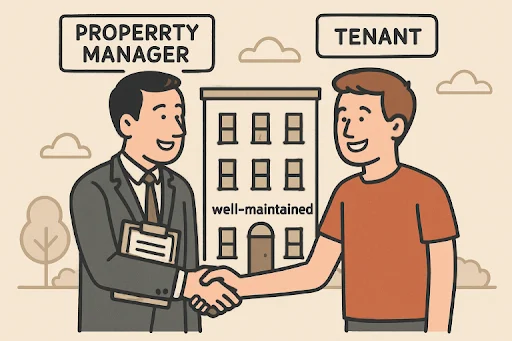BUSINESS
How to transform payment acceptance for your merchants with a merchant acquiring solution

As economies become more digital, businesses need seamless, secure, and flexible payment methods as a precondition to their success. As online shopping continues to rise and more payment types are available, customers now expect various options for paying for their goods.
For merchants, adjusting to the ever-evolving digital payment landscape is crucial. This is where merchant-acquiring solutions come into play. This solution empowers business owners like you to transform payment acceptance for their merchants and take control of their financial operations.
Let’s look at how merchant acquiring can transform payment acceptance for merchants in this blog. But, before that, first, let’s understand the meaning of merchant acquiring.
What is Merchant Acquiring?
Merchant acquiring refers to the process that allows merchants to accept card and electronic payments from customers. It works behind the scenes by connecting merchants with payment processors, financial institutions, and credit card networks to process transactions.
Simply put, Merchant payment acquiring services ensure that when a customer swipes his card or pays online, the payment is processed quickly, securely, and without a hitch, which then provides merchants with a sense of reassurance and ease.
Merchant acquiring is about transaction management and providing value-added services to improve the payment experience. Offering a merchant acquiring platform to your merchants means helping them eliminate friction in payment processing and build an experience that resonates well with today’s consumers.
What Makes a Merchant Acquiring Solution So Important for Your Merchants?
Right from unlocking multiple payment methods to real-time data analytics, here’s why merchant acquiring solution matters for your business:
To Unlock Multiple Payment Methods
Today, customers use numerous payment methods, from classic credit and debit cards to digital wallets and BNPL solutions. Payment processing solutions open up a wider variety of options for merchants, enabling them to align with their customers’ preferences and enhance their chances of sales.
Quicker and More Reliable Transactions
When customers need to purchase something, payment processing needs to be quick and token-based. Failure to complete transactions results in abandoned shops and lost sales. A powerful merchant acquiring platform enables merchants to handle transactions quickly and dependably, which increases customer satisfaction and helps the business earn trust.
Stronger Safety Measures & Scam Avoidance
The digital payment landscape is filled with uncertainties regarding security. Built-in security protocols: Advanced merchant payment acquiring services come with built-in security protocols like encryption and tokenization to secure customer data. These steps protect against fraud and keep sensitive credit card information secure.
Data Analytics and Reporting
The power of a merchant-acquiring platform goes beyond transactions. It also often gives merchants additional information about customer behavior, transaction history, and sales performance. Providing analytics and reporting utilities gives your merchants data to decide how to improve and enhance their end-customer experiences.
Easy Integration with E-commerce and POS Systems
The best solution for merchant payment processing will integrate seamlessly with major e-commerce platforms and point of sale (POS) systems. This seamless connection allows merchants to run their payments from online and in-store channels through one platform, simplifying operations while providing a single source of truth for their business.
Attributes to Consider When Choosing a Merchant-Acquiring Solution
To offer your merchants a payment acceptance solution that is radically different from what they currently have, here are some must-have features your merchant acquiring platform should provide the routine promise of improvement:
Multiple payment support: It includes accepting multiple payment types from credit and debit cards to digital wallets and alternative payment methods.
High security standards: It should be PCI-DSS compliant, tokenized, encrypted, and fraud-detected to ensure the high-security standards of the merchant acquiring platform.
Real-time analytics: Data is an asset that can be used to succeed in business. Seek out a platform that offers real-time analytics, which can assist merchants in tracking sales and customer trends.
Customized payment pages: The ability to customize payment pages is a major UX enhancer for online merchants. Some merchant payment acquiring services allow these customizations, increasing your conversion rate.
Cross-Channel integration: If your solution offers integration across in-store and online systems, it is the key to providing seamless experiences regardless of the sales channel.
Global reach: If your merchants thrive internationally, a solution with multi-currency support and the ability to support international transactions will be for years to come.
How to Implement Merchant Acquiring Solution for Your Business?
Here’s how you can integrate merchant acquiring solution in your business:
Determine What Your Merchant Requires
Try to shape the right acquisition platform for merchants from their respective wallets. Is their business filled with in-store transactions or mostly online? Do they have local customers or buyers from abroad? These simple questions will help you choose a platform that offers unique traits.
Partner with a trusted payment processor
For implementation to succeed, one must find a trustworthy partner for payment processing. Choose a provider that offers flexible, scalable, and secure merchant payment-acquiring services. A wise partner will provide the necessary technical support, constant updates, and solutions that evolve with the industry.
Educate Your Merchants
Introducing new tech can occasionally feel daunting for merchants who need to become more familiar with digital payment processing. Providing training and resources on how to use the merchant-acquiring platform will facilitate this transition. This could include customized tutorials, webinars, or support on call to make the integration process more seamless for them.
Use Analytics for Informed Decision
Whenever merchants have the merchant payment processing solution, urge them to use the above analytical and reporting tools. These tools allow them to adapt their strategies based on actual data, streamlining operations and improving customer satisfaction.
Customer Support and Continuous Optimization
ST Vegan, But the digital payment landscape is changing all the time. Regular sessions with your merchants help you stay relevant to industry trends and ensure their payment systems are up and running smoothly—payment partner or acquiring platform to provide regular updates, customer support, and system improvement opportunities.
Conclusion
Integrating a merchant-acquiring platform is one of the most powerful moves you can make to change payment acceptance for your merchants. This will enable them to receive payments through multiple channels, have several payment modes, and ensure security and analytics. An ideal merchant payment processing solution will make or break your merchants’ ability to keep up with the competitive atmosphere out there today, be it an e-commerce retailer, small business, or enterprise.
As the digital economy evolves swiftly, enabling your merchants to embrace contemporary merchant payment acquiring services can lay the groundwork for lasting growth and give you an important competitive advantage. Acquire new merchants with an end-to-end secure and scalable merchant acquiring solution and enjoy a boost in all dimensions of merchant sustainability.
BUSINESS
MyBrickHouse: A New Way to Experience LEGO in India

There is something timeless about building with bricks. It is slow, intentional, and deeply satisfying in a world that rarely pauses. MyBrickHouse was founded on this belief that creativity deserves space, and every builder deserves access to original LEGO sets that spark imagination without limits.
MyBrickHouse is not built like a typical toy store. It is a dedicated environment where LEGO is treated not as a casual purchase but as a thoughtful craft, a learning tool, and a hobby that grows with you at every stage of life.
How MyBrickHouse Began
The idea took shape when LEGO enthusiasts in India found themselves facing two recurring problems:
authentic sets were hard to find, and unreliable marketplaces made the experience inconsistent.
MyBrickHouse was created to solve both.
The goal was simple but meaningful: build a space where fans could shop without doubt, explore without confusion, and trust what they receive. Today, that intention remains at the core of everything.
Inside the MyBrickHouse Experience
Walking through MyBrickHouse’s digital aisles feels intentionally curated. Instead of overwhelming customers with endless listings, the platform organizes sets based on how real builders think by theme, age, difficulty, and purpose.
Every product page is crafted to inform, not just sell. High-quality visuals, verified specifications, and genuine descriptions give builders the clarity they need before choosing their next project.
Themes That Inspire Every Builder
- Adventures in Everyday Worlds
The LEGO City collection covers familiar scenes of transport, rescue, construction, and community moments. These sets encourage children to expand simple ideas into full stories.
- Stories Shaped by Fantasy and Fiction
Fans of iconic universes discover an entire category dedicated to Star Wars, Marvel, and other cinematic themes. These sets are perfect for storytelling, action recreations, and display shelves.
- Engineering Through LEGO
Technic and Creator Expert introduce functional mechanics, gear systems, and advanced construction styles. They appeal to teens, hobbyists, and adults who enjoy engineering challenges.
- LEGO for Early Development
DUPLO collections support toddlers with safe, oversized bricks. Their designs focus on motor skills and imaginative growth at the earliest stages.
- Artistic and Display Builds
Fans who appreciate structure and design are drawn toward Architecture, Icons, and botanical sets. These builds balance creativity with realism for meaningful display pieces.
What MyBrickHouse Stands For
- Trust in Every Purchase
Every LEGO box is sourced from authorized and verified channels. Authenticity is not optional, it is the guarantee MyBrickHouse was built on.
- A Safe and Reliable Shopping Space
Clear navigation, secure checkout, and detailed guidance make the customer experience straightforward for both first-time shoppers and long-time collectors.
- A Platform Built for All of India
Deliveries reach metros, small towns, hill regions, and emerging cities with equal care. Each package is inspected, packed securely, and shipped with precision.
- Support That Understands Builders
The team behind MyBrickHouse consists of LEGO fans themselves. They know the difference one missing brick can make and offer responsive assistance to ensure builds remain uninterrupted.
More Than a Store
MyBrickHouse aims to cultivate a building culture in India.
It highlights new arrivals, offers insights into different LEGO series, and celebrates the growing community of children, teens, adults, and collectors who use LEGO to learn, play, grow, and create.
This is a place where families rediscover bonding, where students explore STEM ideas, and where adults return to creative freedom after long days. MyBrickHouse sees LEGO not as a pastime but as a tool for personal expression.
Why Builders Trust Us
Because every part of the experience from verified products to careful shipping honors the builder’s journey.
Because every set represents possibilities, not just pieces.
Because LEGO deserves a platform that respects the craftsmanship it stands for.
And because India’s growing community of creators needs a space built specifically for them.
Your Next LEGO Build Starts Here
Whether you are beginning with a small starter kit or searching for a centerpiece model that defines your collection, MyBrickHouse offers a dependable, transparent, and inspiring place to begin.
Explore new themes, revisit classics, challenge yourself with advanced builds, or gift a young learner their first experience with creativity.
At lego.MyBrickHouse.com , every brick contributes to a broader story.
REAL ESTATE
Effective Strategies for Residential Property Management Success

Key Takeaways
- Consistent tenant screening ensures reliable occupants.
- Regular property maintenance preserves value and tenant satisfaction.
- Leveraging technology streamlines operations and communication.
- Clear financial management practices protect margins and ensure compliance.
Achieving success in residential property management requires a comprehensive approach that blends strategy, communication, and ongoing care. Property managers who excel focus on both operational efficiency and creating an outstanding tenant experience. Implementing proven strategies can help raise tenant satisfaction, minimize vacancies, and maximize property returns for owners and investors.
From thorough tenant screening to adopting modern technology, there are numerous ways to enhance the business of managing residential rentals. By proactively maintaining properties and establishing clear processes for both staff and tenants, residential property management teams lay the foundation for long-term success in a competitive marketplace.
Incorporating sustainability initiatives and prioritizing community engagement further amplifies property value and tenant loyalty. With proper planning and continuous learning, property managers can stay ahead of industry trends and deliver meaningful results.
Comprehensive Tenant Screening
Careful tenant selection is the cornerstone of any successful property management strategy. Screening should extend beyond simple references—thorough background checks, credit history evaluations, and rental history evaluations all play crucial roles. Utilizing online screening tools and third-party verification services can reduce potential risks and minimize bias. The ultimate goal is to ensure that tenants are financially responsible, reliable, and have a history of respectful residency. Effective screening can also minimize turnover and late payments, safeguarding property revenue streams. Additionally, proactive property maintenance ensures that units remain in excellent condition, supporting tenant satisfaction and long-term occupancy. Combining thorough tenant screening with regular property upkeep creates a stable, profitable rental environment for both owners and tenants.
Proactive Property Maintenance
Preventive maintenance is crucial for maintaining property value and ensuring tenant satisfaction. A proactive approach means regular inspections, seasonal tune-ups, and prompt attention to repairs before they escalate. Integrating technology-driven maintenance tracking systems can simplify scheduling and help managers stay ahead of issues like HVAC problems, plumbing leaks, or structural wear and tear. Tenants are more likely to renew their leases when maintenance requests are handled promptly, and routine checks ensure common areas are kept in top condition. Property value is preserved, and repair costs are often lower when issues are caught early.
Leveraging Technology
Modern property management software is revolutionizing the industry by automating repetitive tasks and streamlining daily operations. Online payment portals facilitate faster rent collection, digital communication channels keep tenants informed and engaged, and cloud-based work order systems ensure maintenance tasks are resolved efficiently. Virtual tours and online leasing applications can also expand your reach to qualified tenants who are tech-oriented and value convenience. Leveraging technology enables property managers to respond more quickly, reduce paperwork, and minimize errors across all aspects of their operations.
Clear Financial Management
Accurate and transparent financial practices form the backbone of effective property management. Detailed recordkeeping, monthly bank reconciliations, and robust audit trails help protect owners’ margins and ensure regulatory compliance. Transparent financial reporting enables property owners to monitor performance and adjust their strategies as needed. Utilizing specialized property management accounting platforms can ease tax preparation, track expenses, and provide actionable insights into profitability. Managers who communicate clearly about deposits, rent increases, and common-area charges also build trust and prevent disputes.
Effective Communication Channels
Open, responsive communication is essential for healthy tenant relationships. Establishing a resident portal enables tenants to easily submit maintenance requests and access important information, while automated notifications keep them updated on upcoming repairs, inspections, and community events. These tools foster trust and satisfaction, giving tenants confidence that their concerns will be swiftly addressed. Clear communication policies also help staff stay organized and minimize misunderstandings in day-to-day operations.
Implementing Sustainable Practices
Eco-friendly property management attracts environmentally conscious tenants and reduces long-term operational costs. Simple upgrades—such as installing energy-efficient appliances, switching to LED lighting, and introducing comprehensive recycling programs—can make a big difference. Encouraging responsible energy and water use through tenant education and incentives also supports sustainability goals. By reducing their environmental footprint, property managers increase a property’s market appeal and future-proof their investments.
Building Community Engagement
Fostering a sense of community within your properties can significantly enhance tenant retention and create a positive living environment. Hosting resident events—such as holiday gatherings, volunteer opportunities, or informational seminars—breaks down barriers and builds rapport among neighbors. Developing shared amenities, such as fitness centers, lounges, or outdoor spaces, encourages residents to connect, feel a sense of belonging, and invest emotionally in their home. Community engagement often leads to fewer vacancies and more lease renewals.
Continuous Staff Training
Ongoing professional development is crucial for property management staff to stay current with industry best practices and regulatory requirements. Continuous training ensures that the team stays up-to-date on legal changes, customer service techniques, and new technologies. Workshops, certifications, and industry conferences can all contribute to a staff’s effectiveness, ultimately leading to higher tenant satisfaction and improved property performance. Well-trained employees are also more motivated and adept at solving problems quickly and professionally.
Adopting these strategies ensures operational excellence in residential property management, elevates the tenant experience, and safeguards property investments for the long term.
BUSINESS
Why Quality Should Be Your Priority in CC Shops

In the digital era, CC shops—platforms that facilitate the buying and selling of credit card (CC) information—have grown into a significant aspect of online commerce. However, with this growth comes a crucial decision ultshop for users and vendors alike: whether to prioritize quantity or quality. While the temptation to focus on sheer volume is understandable, quality should always take precedence. Choosing quality CCs is not just about avoiding losses; it’s about building trust, ensuring security, and sustaining long-term success. This article explores why quality should be your top priority in CC shops and the benefits it offers.
Understanding the Concept of Quality in CC Shops
Quality in CC shops refers to the reliability, authenticity, and usability of credit card information. High-quality CCs are verified, have low fraud risk, and are supported by legitimate financial institutions. They allow for smoother transactions, reduce the likelihood of chargebacks, and minimize the risk of getting flagged for suspicious activity.
In contrast, low-quality or unverified CCs often come with risks such as expired data, unauthorized use, or errors in transaction processing. These CCs may seem appealing due to lower costs or availability, but they often lead to financial loss and reputational damage. In the world of CC shops, the principle of “you get what you pay for” is particularly true.
Security and Fraud Prevention
One of the most important reasons to prioritize quality in CC shops is security. Fraud is rampant in digital transactions, and low-quality credit cards increase the risk of unauthorized activity. High-quality CCs, however, come with verification protocols and monitoring systems that safeguard both buyers and vendors.
Using verified and reliable cards protects your operations from potential fraud, reduces the risk of chargebacks, and ensures that transactions are legitimate. By focusing on quality, you create a secure environment that safeguards your financial interests and the trust of those you do business with.
Building a Positive Reputation
Reputation is everything in the digital credit card marketplace. Vendors who prioritize quality over quantity are viewed as trustworthy, responsible, and professional. Customers are more likely to return to a seller known for providing high-quality CCs, while businesses that focus on low-quality or unverified cards risk being flagged as unreliable or fraudulent.
A strong reputation built on quality leads to long-term relationships with customers and other vendors. In competitive markets, this trust is invaluable—it encourages repeat business, positive reviews, and word-of-mouth referrals, all of which contribute to sustainable success.
Minimizing Financial Risks
Using low-quality CCs can lead to significant financial losses. Failed transactions, chargebacks, and blocked accounts ultshop.mobi are common consequences when dealing with unverified or fraudulent credit cards. Each failed transaction represents not only a lost opportunity but also potential fees and complications for the user or vendor.
High-quality CCs, on the other hand, are verified and less likely to trigger issues during processing. This reduces financial risks and ensures smoother operations, allowing users to focus on growth and efficiency rather than constantly managing problems caused by poor-quality cards.
Enhancing Transaction Efficiency
Quality credit cards facilitate faster, smoother, and more reliable transactions. Verified CCs are compatible with secure payment gateways and often come with features that prevent errors or interruptions during processing. This efficiency benefits both the buyer and the seller, ensuring that transactions are completed without delay or complication.
In CC shops where speed and reliability are valued, focusing on quality can enhance user experience and maintain operational consistency. Customers are more likely to engage with vendors who provide seamless transactions, reinforcing loyalty and trust.
Legal and Ethical Considerations
Prioritizing quality is not only a matter of security but also of legality and ethics. High-quality CCs come from legitimate sources and are typically verified for authorized use. Using or selling low-quality, unverified, or stolen credit card information can expose vendors and buyers to criminal liability and legal repercussions.
By focusing on quality, you operate within legal and ethical boundaries, which strengthens your credibility in the market. Vendors and users who respect legal frameworks are more likely to develop sustainable operations and avoid the significant risks associated with illicit activities.
Long-Term Sustainability
Focusing on quantity over quality may provide short-term gains, but it is rarely sustainable. Low-quality CCs increase the likelihood of disputes, blocked accounts, and financial loss, which can jeopardize your ability to continue operations.
Quality, however, ensures long-term stability. Verified and reliable CCs reduce operational risks, minimize disputes, and maintain the trust of customers and partners. For anyone seeking sustainable success in CC shops, quality is the foundation on which long-term growth is built.
Differentiation in a Crowded Market
The CC shop ecosystem is competitive, with numerous vendors offering similar products. In such a market, quality becomes a key differentiator. Vendors who focus on providing verified, high-quality CCs stand out as reliable and professional, while those who prioritize quantity risk being overlooked or labeled untrustworthy.
Platforms that emphasize quality, such as UltShop, illustrate how prioritizing verified and reliable credit cards can create a competitive edge. Customers and partners gravitate toward platforms known for high standards, ensuring repeat business and positive market recognition.
Encouraging Responsible Practices
Prioritizing quality fosters responsible practices among both buyers and vendors. High-quality CCs encourage careful verification, secure handling of information, and ethical behavior in transactions. This responsible approach reduces the prevalence of fraud, promotes accountability, and contributes to a safer online credit card ecosystem overall.
By setting a standard for quality, vendors can influence the behavior of others in the market, promoting higher standards and reducing the risks associated with low-quality CCs.
Conclusion
Quality should always be your priority in CC shops. While the allure of quantity may seem tempting, focusing on high-quality, verified credit cards ensures security, enhances reputation, minimizes financial risks, and fosters long-term sustainability. High-quality CCs provide reliable, efficient transactions, demonstrate professionalism, and encourage ethical behavior.
In an increasingly competitive and high-risk environment, quality acts as a safeguard and a differentiator. Vendors and buyers who prioritize quality build trust, establish credibility, and position themselves for long-term success. Platforms like UltShop exemplify this approach, showing that prioritizing quality over quantity is not just a strategy—it is the cornerstone of a responsible and prosperous digital marketplace.
Ultimately, choosing quality CCs is about more than completing transactions—it’s about protecting your reputation, maintaining ethical standards, and ensuring a sustainable path forward in the complex world of CC shops.

 LIFESTYLE9 months ago
LIFESTYLE9 months agoThe Disciplinary Wives Club: Spanking for Love, Not Punishment

 BUSINESS9 months ago
BUSINESS9 months agoBrand Visibility with Imprint Now and Custom Poly Mailers

 ENTERTAINMENT1 month ago
ENTERTAINMENT1 month agoExploring the Kristen Archives: A Treasure Trove of Erotica and More

 HEALTH8 months ago
HEALTH8 months agoHappy Hippo Kratom Reviews: Read Before You Buy!

 HOME IMPROVEMENT9 months ago
HOME IMPROVEMENT9 months agoThe Do’s and Don’ts of Renting Rubbish Bins for Your Next Renovation

 TECHNOLOGY8 months ago
TECHNOLOGY8 months agoDizipal 608: The Tech Revolution Redefined

 BUSINESS10 months ago
BUSINESS10 months agoExploring the Benefits of Commercial Printing

 GENERAL5 months ago
GENERAL5 months ago5 Factors That Affect Tattoo Removal Success












